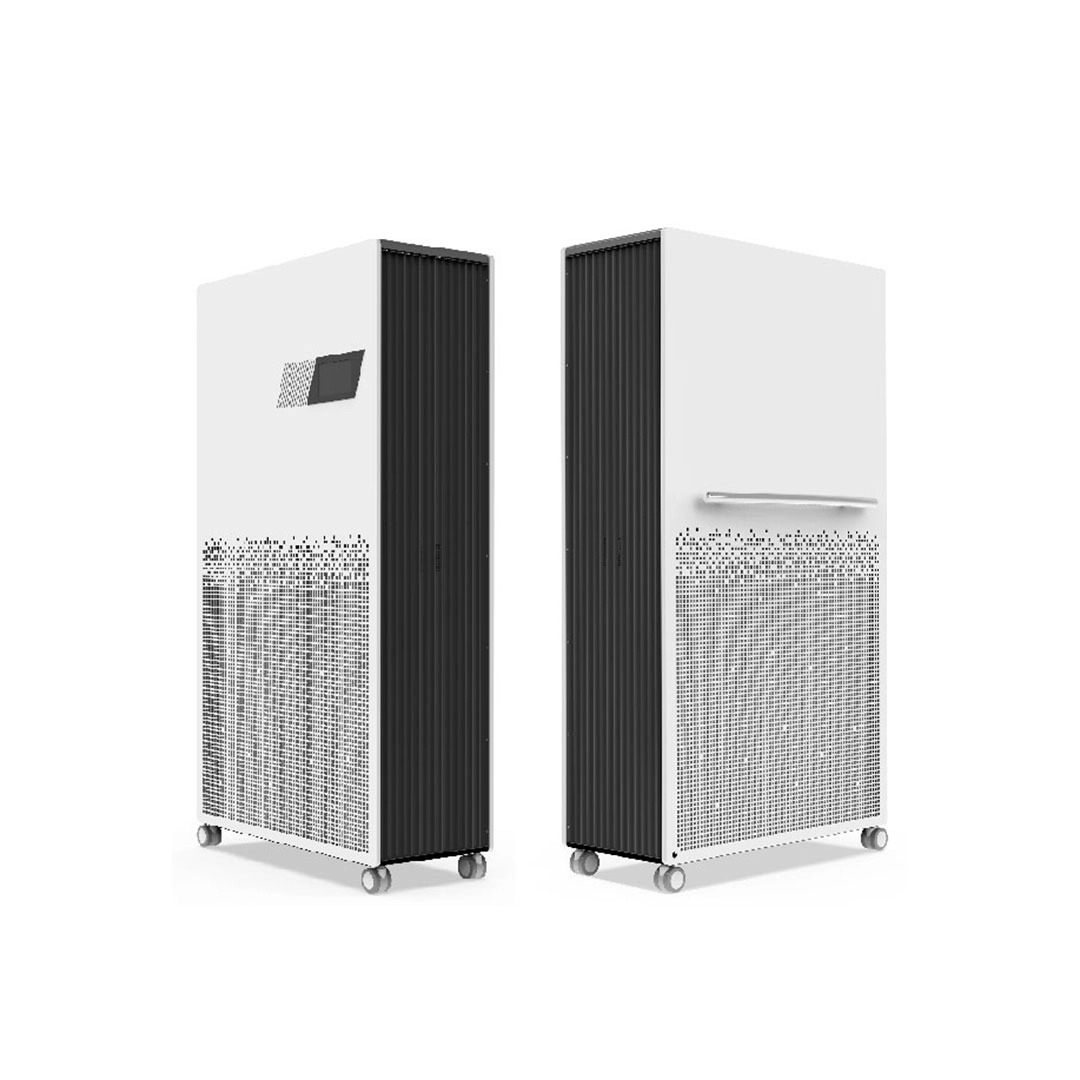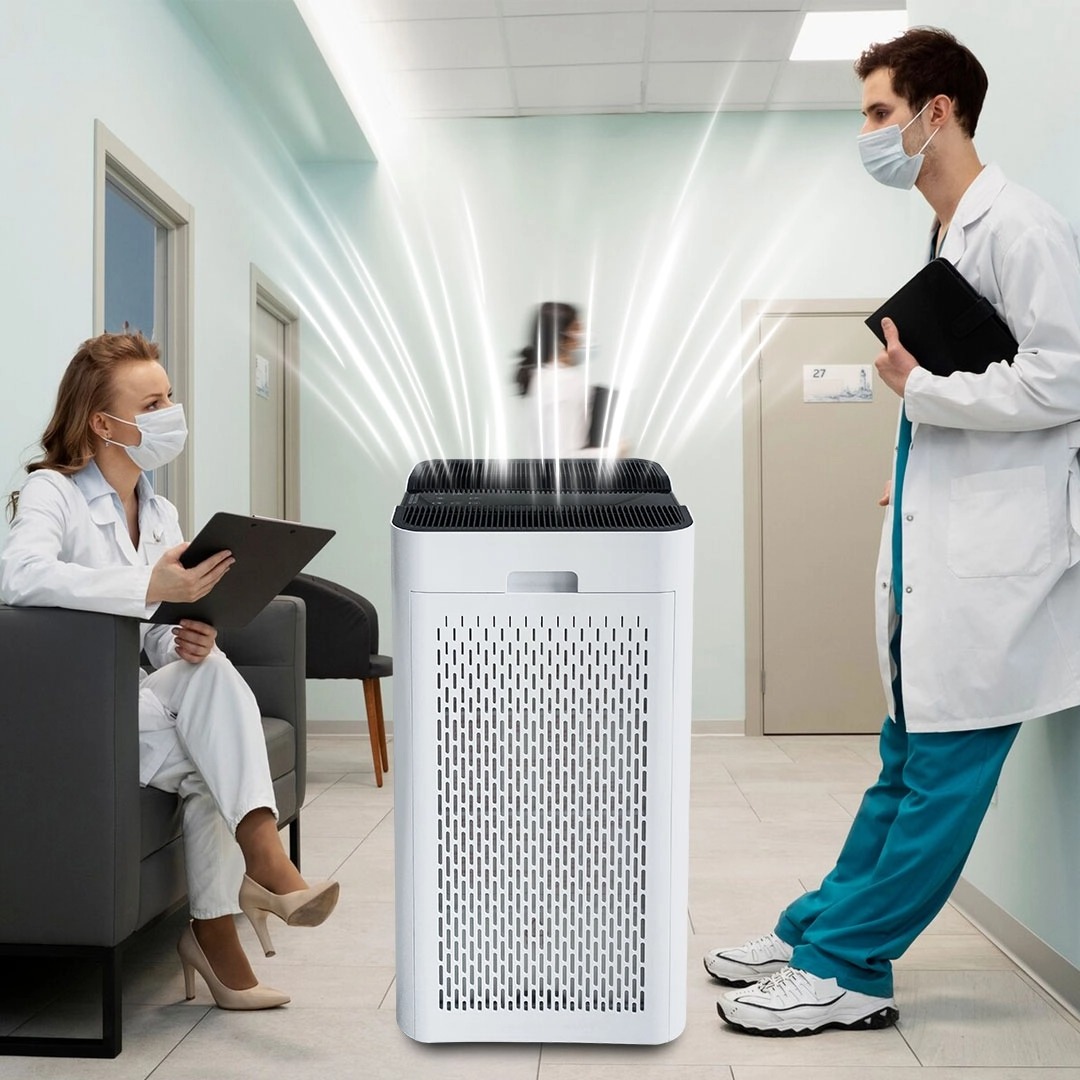Author: Site Editor Publish Time: 20-09-2025 Origin: Site











The air you breathe at home directly impacts your health, comfort, and overall well-being. Dust, allergens, mold spores, and viruses often circulate indoors, making air quality a growing concern. While regular cleaning helps, surface hygiene alone is not enough. The real challenge lies in disinfecting the air itself—something invisible, yet essential. With the rise of advanced technologies such as the UVC Air Disinfection System, homeowners now have practical tools to purify their living spaces.
Indoor environments often harbor pollutants that accumulate faster than outdoors due to poor ventilation. Cooking fumes, pet dander, volatile organic compounds (VOCs) from furniture, and microscopic pathogens can linger in the air for hours. For households with children, elderly members, or allergy sufferers, these pollutants increase the risk of respiratory illnesses and infections. Unlike visible dust, airborne microbes are invisible threats that require targeted solutions. Disinfecting the air is not just about comfort—it’s a proactive step toward reducing illness, controlling asthma triggers, and supporting immune health. The growing interest in UVC Air Disinfection Systems reflects how people are prioritizing air quality as a key part of household hygiene.
The first and most natural way to improve indoor air quality is ventilation. Opening windows and doors may seem simple, but it allows stale air to escape and fresh air to circulate. Cross-ventilation, where air enters from one side of the home and exits through another, can significantly dilute indoor pollutants. However, ventilation alone has limitations—it cannot fully eliminate viruses or bacteria circulating indoors. In colder climates or highly polluted areas, relying only on outdoor air exchange is not feasible. This is where combining natural airflow with advanced systems, such as UVC Air Disinfection Systems or HEPA filters, becomes effective. Think of ventilation as a foundation, while disinfection systems provide targeted protection against airborne pathogens.

Many people confuse air filtration with air disinfection, but the two serve different purposes. Filtration captures particles like dust, pollen, and hair using HEPA filters. Disinfection, on the other hand, actively neutralizes biological contaminants such as bacteria, mold spores, and viruses. While a HEPA filter can trap particles as small as 0.3 microns, it doesn’t kill them—meaning microbes can still survive on the filter’s surface. This is where a UVC Air Disinfection System adds value. By using ultraviolet germicidal irradiation, UVC systems damage the DNA or RNA of pathogens, rendering them inactive. The most effective strategy often combines both: filtration to remove particles and disinfection to neutralize living microorganisms.
| Feature | HEPA Filtration | UVC Air Disinfection System |
|---|---|---|
| Main Function | Traps dust, pollen, dander | Neutralizes bacteria and viruses |
| Effectiveness Against | Allergens, visible particles | Microbes, mold spores, airborne viruses |
| Maintenance | Filter replacement needed | Lamp/tube replacement periodically |
| Best Use Case | Allergies, dust control | Infection prevention, sterilization |
A UVC Air Disinfection System uses short-wavelength ultraviolet (UV-C) light to destroy the genetic material of microorganisms. Air passes through a chamber where UV-C lamps are installed, and pathogens exposed to the light become inactive within seconds. Unlike chemical disinfectants, UVC technology doesn’t leave residues or harmful byproducts. The system is often integrated into HVAC ducts or available as portable standalone units. Hospitals, laboratories, and even airplanes use UVC systems for sterilization, highlighting their proven effectiveness. For homeowners, this translates into a safe, continuous method of disinfecting indoor air without manual effort. Importantly, modern systems are designed with shielding to prevent direct human exposure, making them safe for everyday use.
Installing a UVC Air Disinfection System offers multiple advantages beyond simple air purification:
Continuous Protection – Unlike one-time cleaning, UVC systems work around the clock.
Chemical-Free Disinfection – Eliminates reliance on sprays or harsh cleaning agents.
Reduced Risk of Airborne Illness – Particularly valuable during flu season or outbreaks.
Odor Control – Neutralizes microbes that cause musty or unpleasant smells.
Integration with HVAC – Works invisibly in the background without altering home aesthetics.
Compared to standalone air purifiers, UVC systems address the gap of microbial disinfection. For families concerned about both allergens and pathogens, combining HEPA filtration with UVC disinfection provides a more complete indoor air quality solution.
While UVC systems are highly effective, they are not the only option available. To understand their place in home air quality strategies, let’s compare them with common alternatives:
| Method | Effectiveness Against Germs | Cost Range | Maintenance Level | Ideal Application |
|---|---|---|---|---|
| Ventilation | Low | Free | Low | General airflow |
| HEPA Filtration | Moderate | Medium | Medium | Dust & allergens |
| Ionizers/Ozone Generators | Low–Moderate | Low–High | Medium | Limited use only |
| UVC Air Disinfection System | High | Medium–High | Low–Medium | Continuous disinfection |
This comparison shows that while ventilation and filtration are helpful, only UVC directly addresses microbial contamination at the DNA level. For households with high hygiene priorities, a UVC Air Disinfection System offers the most reliable long-term solution.
While installing a UVC Air Disinfection System is one of the most effective measures, homeowners can strengthen results by combining it with practical daily habits:
Regularly Change Filters: Even the best system underperforms with clogged filters.
Control Humidity Levels: Keep indoor humidity between 40–60% to inhibit mold growth.
Clean Ventilation Ducts: Prevent dust and microbes from recirculating.
Use Plants Wisely: Some indoor plants improve air quality, but overwatering can promote mold.
Consider Room Size: Choose a UVC system matched to the size of your space for optimal performance.
By layering these practices, you create a multi-barrier defense that ensures cleaner, healthier indoor air.

Before investing in a UVC Air Disinfection System, evaluate these factors:
Placement: Central HVAC integration covers the entire home, while portable units target specific rooms.
Energy Consumption: Most UVC systems are energy efficient but check wattage for long-term costs.
Safety Features: Ensure the system prevents accidental direct UV exposure.
Maintenance Requirements: Lamps typically need replacement every 9–12 months.
Budget vs. Benefits: While initial costs may be higher, the long-term health savings outweigh the expense.
Doing a cost-benefit analysis helps ensure the system aligns with your household’s needs.
Disinfecting the air in your home goes beyond comfort—it’s about safeguarding your family’s health. While natural ventilation and HEPA filters play important roles, they often fall short of neutralizing harmful microorganisms. The UVC Air Disinfection System bridges this gap by continuously inactivating airborne pathogens, offering a chemical-free, effective, and low-maintenance solution. When combined with good household practices, UVC technology provides a comprehensive strategy to create a healthier indoor environment.
1. Is a UVC Air Disinfection System safe for everyday home use?
Yes. Modern systems are designed with protective shielding that prevents UV exposure, making them safe for continuous use in occupied spaces.
2. How often do I need to replace the UVC lamps?
Typically, UVC lamps last between 9 to 12 months before their effectiveness decreases. Replacement schedules may vary by manufacturer.
3. Can a UVC Air Disinfection System replace my air purifier?
Not entirely. While UVC systems disinfect microbes, air purifiers with HEPA filters remove allergens and dust. Combining both provides the best results.
4. Does UVC technology remove odors?
Yes, by neutralizing bacteria and mold spores, UVC systems reduce musty or unpleasant odors, though they may not address chemical fumes.
5. Are portable UVC air sterilizers as effective as HVAC-integrated ones?
Portable units are effective for single rooms, while HVAC-integrated systems disinfect the entire home. Your choice depends on coverage needs.